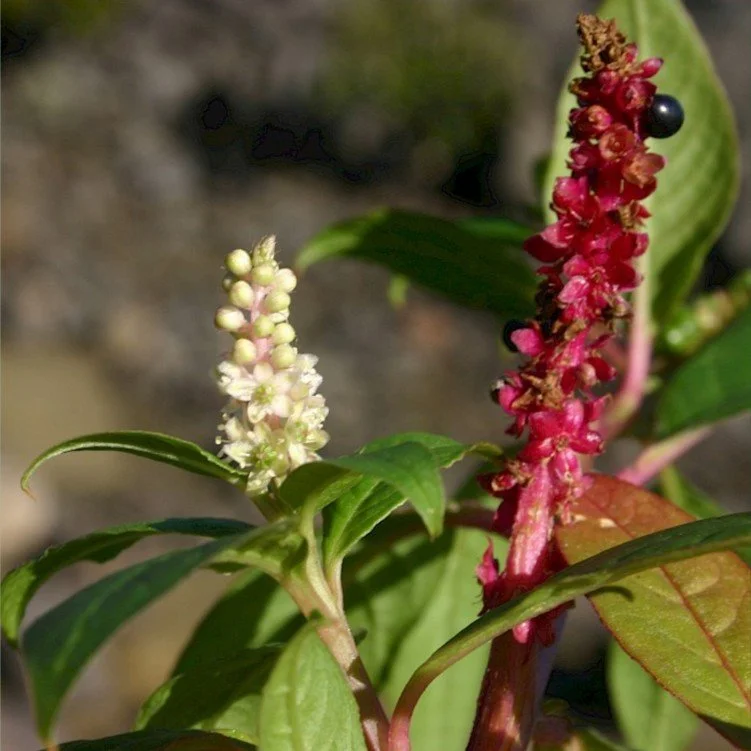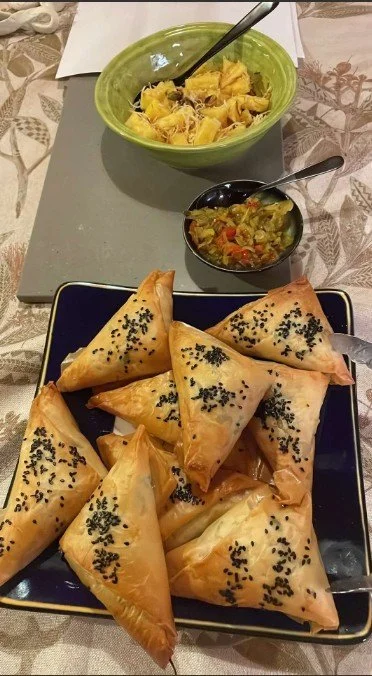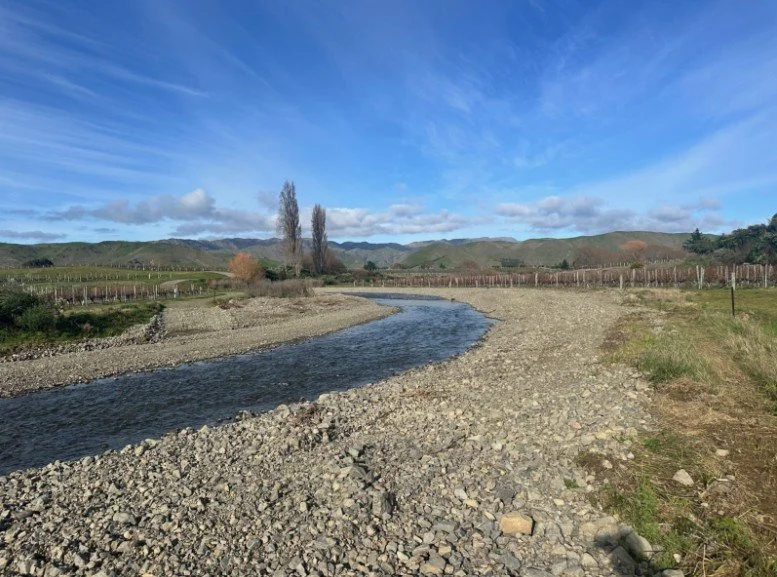FuturEcology & EmGuard ™ August 2025
By Jan Fryer
The pine pollen has started and the evenings are getting slightly longer, so that feeling of spring is in the air.
I always enjoy the feeling of hope that spring brings, especially after the very wet winter the country has experienced. We have also seen a renewed enthusiasm for planting projects happening as the days improve and the soil dries out a bit.
Our team was out in the Wairau Valley this week on one of our big wetland planting sites. We had been unable to get up there for a few weeks, as the valley was devastated in the floods. We couldn’t believe the amount of gravel that has shifted in the Wairau catchment in the last event.
As I am sitting here writing this, there is a constant stream of gravel trucks going past the office. They are shifting gravel from the local Wakapuaka River, that actually came through in the 2022 floods, but is continuing to cause issues as the whole riverbed level has risen. This has reduced the flood carrying capacity of the river and now just a heavy rainfall can cause issues.
Click to see larger image
Properly managed removal of gravel can mitigate issues, such as erosion and bank stability. Berm vegetation, adjacent properties and infrastructure are also better protected. The recent flooding in the Tasman region certainly highlighted this issue.
Councils around the country are now very focused on a more holistic approach to river management as a key to better environmental outcomes. It will require a collaborative approach, using a range of solutions including nature–based, technology, science and community.
Climate resilience and adaptation should be part of all our conversations.
We also need the whole community connecting with their local rivers and taking an active interest in their future. We have a local community event on the 16th August at Hira Reserve from 1-4pm. This is to help replant some of the river banks where the gravel extraction has occurred. An added bonus has been the return of the very popular swimming holes that have been used by generations of locals. If you are in Nelson, you are very welcome to come along. Bit cold for swimming though!
Weed of the Month
Ink Weed Phytolacca octandra
By Jan Fryer
Originating from tropical South and Central America, this bushy, spreading, hairless, smelly perennial is very common in freshly disturbed ground. It has a deep pliable taproot, and hollow, brittle stems, that are usually a reddish colour and very branched. The inside of the stem has numerous white dots which are crystalline oxalate. Leaves are narrow and oval, up to 50mm long. They are light green when young, turning to reddish colour in autumn and are arranged alternately on the stem.
The dense, erect, white flower structures (Nov-Aug) are followed by succulent purple/black berries with a dark red juice. These are the most distinguishing feature of this plant.
It grows and matures quickly, producing many long-lived seeds. It tolerates damage, wind, fire, loose soils and wet to moderately dry conditions. It doesn’t tolerate frost or deep shade, so it is eventually shaded out in a planting.
It can be controlled by physical removal. Cut and paste the stem as soon as possible after cutting with glyphosate gel (120g/L). A foliar spray with a knapsack can be used if the plant is under 1m in height, using glyphosate 360 at 2% and recommended a adjuvant.
BEWARE it is toxic to stock. This is a result of the presence of saponins and oxalic acid, especially in the berries, and this is concentrated in the autumn when the berries are ripe.
A note from our experience when working around inkweed, be very careful! It is a skin and eye irritant. One of the contractors we work with recently said he had breathing problems and was quite concerned by his reaction to inkweed after he had spent time weedeating a large patch. One of our staff members also experienced quite a severe reaction in his eyes, after weedeating a patch of inkweed.
Our recommendation is to limit your physical contact with this weed. It does get shaded out and tends to reduce naturally over time. If you do need to clear it, wear PPE, including glasses and a mask and use a cut and paste method or foliar spray.
(Weedbusters)
Plant of the Month
Kōwhai- Sophora microphylla
By Robert Fryer
We are now into August and the first signs of spring are evident. We are just starting to see the early Kōwhai starting to flower, with the Cook Strait variants being the first, having been flowering for some weeks now.
Kōwhai really needs no introduction to New Zealanders, especially those of us who remember its flowers on postage stamps and the two cent piece, if I remember correctly (stop showing your age Robert).
For my part, I also value its timber. It has been used for boat building, amongst other things. I can remember turning a lovely bowl from a large piece of a fallen tree. It takes a good finish and produces a rich brown and sometimes quite figured wood. It carves well, but does need care while sanding, as the dust can be toxic.
In Nelson North, we have lost most of our old forest Kōwhai and I have seen a number of these come down over the last thirty years. Now I can only think of a few specimens at Paremata Flats, as some of the old originals along the Wakapuaka have been lost. We do plant many, but must ensure the seed is ecosourced, as unfortunately a wide range of seed source appears to have been used countrywide. This has lead to great variability of form, and plants that have been shifted well beyond their natural range. This is okay in a garden, but not in a restoration planting.
Kōwhai are a valuable species in a restoration planting, coping with both wet and dry soils and providing much needed food and habitat for many different creatures.
Let’s make sure we always include Kōwhai and celebrate our local forms that give us our regional identity.
High Stakes!
By Emma Petch
When it comes to planting, speed and smarts are everything. At FuturEcology, we’ve fine-tuned a method that gets plants in the ground efficiently, without sacrificing precision or quality.
It all starts with the humble bamboo cane. These little sticks are our secret weapon. We use them to pre-mark our spacing and ensure we’ve got enough plants to cover the site. Think of it as setting the stage before the show begins.
Next up: spraying. If the area hasn't already had the full "blank canvas" treatment, we spray around each cane to knock back any competition. Clean slate, happy plants.
The real magic happens during planting. Efficiency is all about reducing back-and-forth faffing. One person moves ahead of the team, laying out plants cane to cane like a botanical breadcrumb trail. That way, the planting crew can cruise through the site with rhythm and flow.
And then come the guards, same game plan. A team member works ahead laying them out, so the rest can follow without missing a beat.
Fast. Organised. Satisfying. Just how we like it.
Below is a short video demonstration.
Pest Control
By Jan Fryer
The possums are out in force in our garden at the moment. They seem to enjoy a wide variety of food. The carrot tops have been grazed right off, the magnolia flowers are fair game and they are even stripping dock leaves. They are welcome to the dock, but not on any of our other plants. Robert goes out every night with the spotlight and has seen them running off into the paddock. We do use an air rifle, but you need to be there on the spot, so have found the Timm Trap to be very effective. We have been baiting them with a cut apple and you can add cinnamon or aniseed as an attractant.
Projects Update
More fruit trees at Marsden Valley
By Evelyn Nashiro
The team at FuturEcology had the privilege of planting a wide range of fruit trees (lemons, limes, peaches, apples, pears and feijoas) at Marsden Valley, where new homes and a vibrant community has been taking shape for the last couple of years.
We felt very happy about planting fruit trees, knowing that we are creating spaces for future generations, where whānau will be able walk and pick fresh kai from shared trees. We think that it isn’t just about food, it’s also about being sustainable, being connected with the neighbours and building a sense of community. Connected communities are resilient communities.
Whakatū is well known for sunshine and strong community spirit. We are proud to contribute to the community by establishing green areas, filled with native and fruit trees.
See the pictures below and next time you go to Marsden Valley, see if you can spot the fruit trees.
Harakeke, Carex secta and Kahikatea thriving at Hira Reserve
By Evelyn Nashiro
Understanding the land is key to helping it thrive and that’s why the team at FuturEcology has always focused on planting the right plant in the right place.
In our project at Hira Reserve, we worked in a wet area, where water tends to collect and it is the perfect environment for some native grasses and trees to thrive. We planted a mix of harakeke, Carex secta and kahikatea there, all well-adapted to wet conditions and vital for supporting biodiversity and resilience in flood events. See the pictures below!
We love dotting kahikatea throughout these zones, as they are Aotearoa’s tallest native tree and they absolutely flourish in wetlands. Over time, kahikatea will grow above the native grasses and harakeke, creating a beautiful landscape.
After the past flood events in the region, we are confident that planting these three natives together for their resilience and adaptation to climate change is the path to take.
EmGuard Update
A very happy witch (sorry mum).
By Emma Petch
Which witch is which?
Although sometimes a little unconventional, we are always keen to make processes better and more efficient. One of our simple fixes is one that seems to turn the most heads!
When packing EmGuard pallets, they need to be wrapped in plastic to protect them on their journeys around the country. The pallet wrap comes on cardboard tubes, think very large gladwrap!
Unfortunately, the cardboard is quite hard on your hands and the angles aren’t exactly elegant. Our solution you ask? The pallet wrap has been put on a broom, making it nice and easy to use! While maybe at risk of looking like we just flew in, these witches are all about the efficiencies!
Interesting Snippets
What we’ve been watching
Little Disasters
by Emma Petch
With winter starting to drag, I have found myself consuming a little more tv than usual.
This month's binge was ‘Little Disasters’ on TVNZ on demand.
It is a psychological drama, that sees a mother take her 10 month old baby into the emergency department with unexplained injuries. The doctor responding was her best friend, who then had to make the challenging decision to report the incident to child services. The story follows the emotional fallout from that moment.
It’s intense, thought-provoking, and full of moral grey areas. If you're into shows that explore the complexities of friendship, motherhood, and trust, with plenty of emotional tension, Little Disasters is worth a watch.
What we’ve been eating
Nadia Lim’s Baked Samosas
By Jan Fryer
I am absolutely loving Nadia Lim’s cookbooks, and recently ventured into making samosas for the first time. I’m thrilled with the results and will definitely be making them again.
Ingredients
Sweet potatoes, kumara or potatoes 650g peeled and cut into 1cm cubes.
1 chopped onion
Mustard seeds – 2 tsps
Curry powder 2 tablespoons
Olive oil – 1 tablespoon
Salt
Freshly ground black pepper
Spinach leaves - 3 cups chopped
Frozen peas 1 ½ cups defrosted
Coriander ¼ cup chopped
Filo pastry 12 sheets
Melted butter 3 tablespoons
Sesame seeds – 1 tsp.
Preheat oven to 200°C. Line an oven tray with baking paper. Toss kumara, sweet potato or potato and onion with mustard seeds, curry powder and olive oil. Season well with salt and pepper and bake for 15-20 minutes until tender.
Cook spinach until just wilted. When cool squeeze out as much moisture as possible. Chop finely.
Combine cooked potato mixture with peas, spinach and coriander and roughly crush with a fork to combine. Season with salt and pepper to taste.
Place a sheet of filo pastry on a clean, dry bench (keep the remaining sheets covered with a clean, damp tea towel). Brush filo sheet lightly with butter. Fold over a third lenghtwise and then fold over again, so you have a long rectangular strip 3 layers thick.
Place the long end of the pastry strip facing you. Placed 2 heaped tablespoonfuls of mixture on the left side of the pastry. To enclose the filling, fold bottom left corner diagonally to meet top edge of filo strip, making a triangular parcel (Note at this point, I resorted to YouTube to work out how to do the fold).
Continue folding, until the pastry is completely used. Continue with remaining 11 filo sheets.
Arrange samosas on a baking tray and brush with a little butter on both sides. Sprinkle with sesame seeds and bake in the centre of the oven for about 30 minutes until pastry is crisp and golden.
Serve with kasundi or chutney.
Enjoy!
Conclusion:
By Emma Petch
As we inch closer to spring, it’s heartening to see signs of new life popping up, from blooming kōwhai, to freshly planted sites across the region. Whether you’re out in the field, tuning into a good drama, or planning your next project, we hope this newsletter has brought a bit of inspiration your way.
Thanks for reading, and as always, feel free to get in touch, we love hearing from you.
Until next time,
The FuturEcology Team
If you have any projects in mind and would like to talk further, give us a call or pop in and see us.
We look forward to hearing from you!











